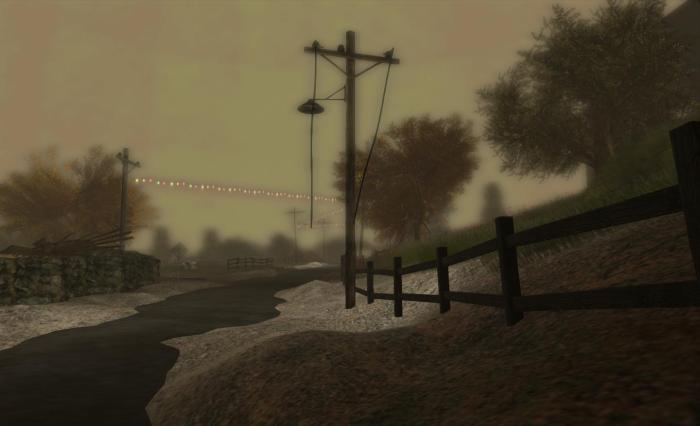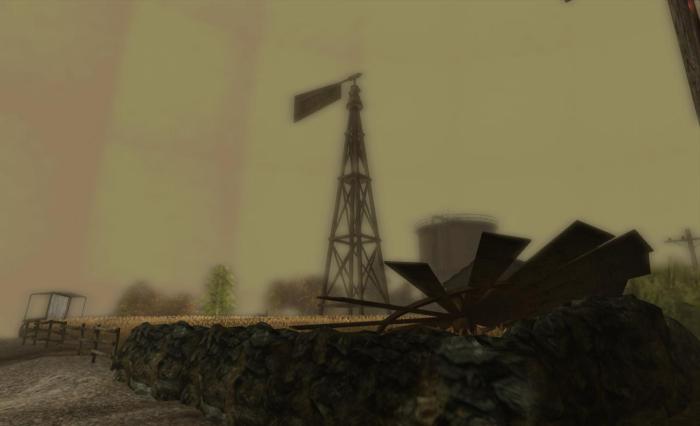Had it not been for Miro Collas, I’d probably not have discovered The Sand Hills Country, Sei Ixtar’s powerfully evocative creation, for some considerable time. And I’d all the less for not having done so.
I often wax lyrical about the places I explore in Second Life, but The Sand Hills Country, covering the Homestead region of Lust, is deserving of everything I can say about it – and far more. It is not only a wonderfully immersive place to explore it is also one which I found – whether Sei (Sey to his friends) intended it to be or not – to be rich in metaphors, which adds enormously to its appeal.

On arriving at The Sand Hill Country, the first thing you notice is the custom environment Sey has created. I’m one for frequently using the viewer’s depth-of-field to create some atmospheric (or as other might fairly put it, “blurred” :)) images. With The Sand Hills Country, Sey has added horizon haze, together with a “skydome” for the sky, both of which create incredible atmosphere and feel to the region, giving it a rich depth (although the skydome colour might also be somewhat reproducible using windlight) All of the snaps in this article and on my Flickr stream accompanying this post have been taken using the defaults applied to the region.

A sign near to the arrival point (literally just across the road, at the bottom of the steps leading to a derelict house) is a notecard giver. This provides background information on the region, including the fact that autoreturn is OFF – so visitors are free to rez items when visiting, but are also asked to please clean things up before they leave.The description of the region is straightforward, yet also opens the door to allowing one’s thoughts to wander free:
A rural landscape overwhelmed by desert, but not only… Suspended between time and space, take a breath, explore, and enjoy this unique scene.

Looking around, it is hard not to imagine one has been transported back to Steinbeck’s dust bowl era and The Grapes of Wrath, although potentially with a bit more water here. To one side of the region lay sand hills, ever-encroaching and washing against the edges of a lone farm. While wheat is still growing in the fields and sheep and cows do still graze, things are not going well; it would appear that people are up and leaving, as the shell of a house overlooking the wheat field testifies.
The poignancy of the imagery is evident elsewhere, be it in the nesting box with eggs within and a mother bird guarding the entrance or the old, silent, “nodding donkey” pumpjack. Such is the power of this imagery that it is hard not to view it as a metaphor for the whole of Second Life and our varying attitudes toward it. Many do see the platform as slowly dying, perhaps a victim of its own initial rapid growth as a result of premature exploitation; and this is perhaps mirrored by the encroaching sand in the region, and the broken pumpjack and shattered warehouse with the deserted house beyond. Everything is washed out, dull, empty. People have moved on, leaving vacant spaces in their wake. Certainly, I couldn’t help but find strong symbolism in the fact that the only real colour in this part of the region comes from a couple of lifebouys floating in the water…

Yet here is also hope for the future, crops are still being gown; sheep and cattle still graze, ducks swim and feed – and new life is still entering the world, as shown by a nest box filled with eggs and watched over by a mother bird; it’s almost as if nature is whispering, “There is still hope.”
I’ve no idea if any of this is intentional on Sey’s part, or simply the wanderings of my over-active imagination. And it doesn’t really matter. The Sand Hills Country is a beautiful and creative study, whether you are simply looking for a new place to visit and share, or if you are seeking a place which offers a rich vein of photographic opportunities or if you’ll feeling somewhat philosophical about (Second) Life, the universe or everything – or whether you feel a combination of all three.
Why not go see for yourself? I doubt you’ll be disappointed.

Related Links
- Lust / The Sand Hills Country SLurl (Rated: Moderate)
With thanks to Miro Collas.
